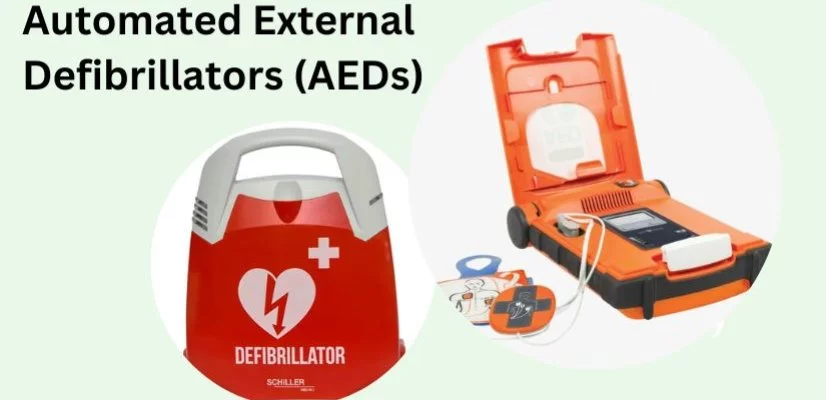Automated External Defibrillators (AEDs) are portable devices that can save lives during sudden cardiac arrest (SCA). In this blog, we’ll discuss the many benefits of AEDs for patients and caregivers, along with some popular AED models available on the market.
What are AEDs?
A. AEDs in action
AEDs analyze heart rhythms and deliver a controlled electric shock when needed. This helps restore a normal heartbeat, improving survival chances during SCA.
B. AED types
Various AED models exist for different users, including professionals, public access, and home use. Some popular models include:
C. AED components
AEDs have a main unit, electrodes, and a battery. They provide visual and audio guidance for users.
AED benefits
A. Fast response
AEDs offer quick help in emergencies, with every minute being crucial in SCA situations.
B. Higher survival rates
AEDs can increase survival rates by up to 70% when used early.
C. User-friendly
AEDs are designed for people without medical training and offer step-by-step guidance.
D. Accessibility
AEDs can be placed in public areas and homes, ensuring easy access.
E. Strengthening the chain of survival
AEDs are a vital link in the chain of survival during SCA emergencies.
Public AEDs
A. Where to place AEDs
AEDs should be in high-traffic areas and places with increased SCA risk.
B. Public AED program role
These programs increase AED availability and train community members.
C. Raising awareness
Public awareness and training in AED use can save lives.
Home AEDs
A. Identifying the need
Patients with heart conditions or SCA risk should consider a home AED. Consult a healthcare provider for advice.
B. Choosing an AED
Consider ease of use, maintenance, and cost when selecting a home AED. Explore the models mentioned above for a suitable option.
C. Training and upkeep
Ensure proper AED training and regular maintenance for home AEDs.
Legal and ethical aspects
A. Good Samaritan laws
These laws protect individuals using AEDs in emergencies from liability, as long as they act without gross negligence or willful misconduct.
B. AED owner responsibilities
Owners must maintain their AEDs and ensure accessibility in emergencies.
Disclaimer
The information provided is for general knowledge only. Consult your doctor for personalized advice and treatment. Medikart HealthCare is not liable for any actions taken based on this info.

